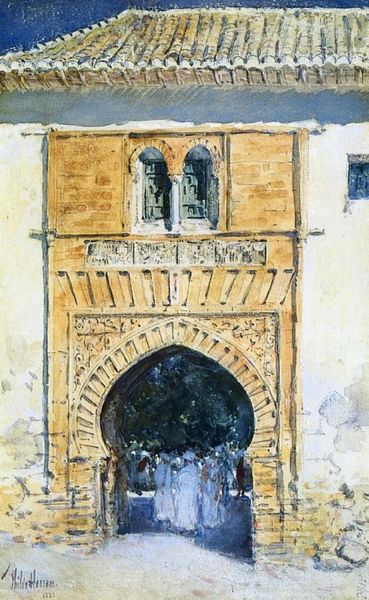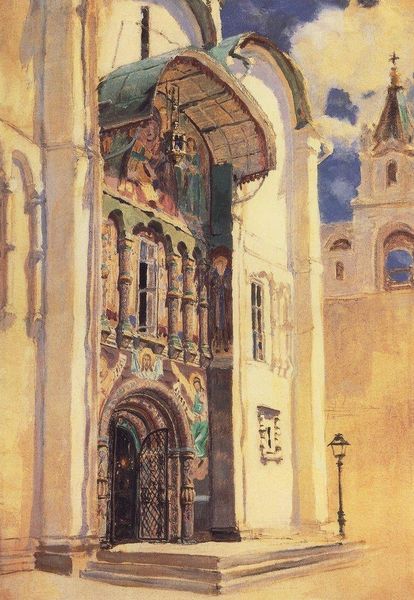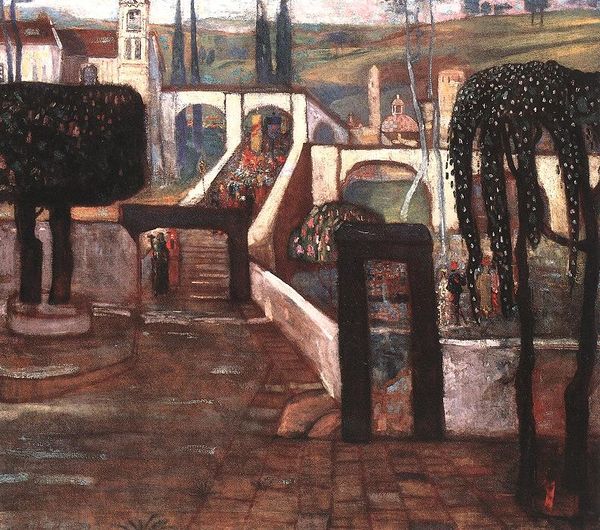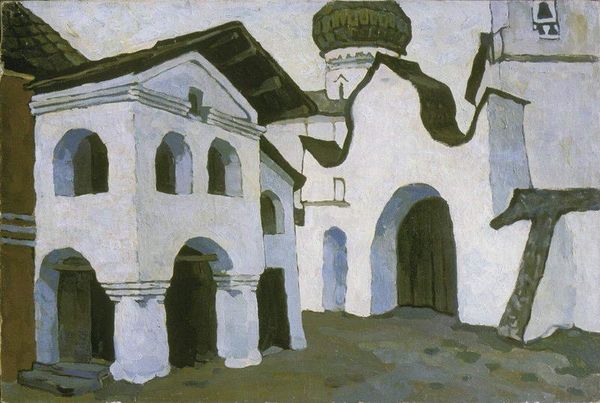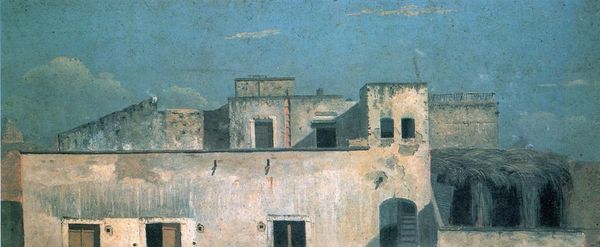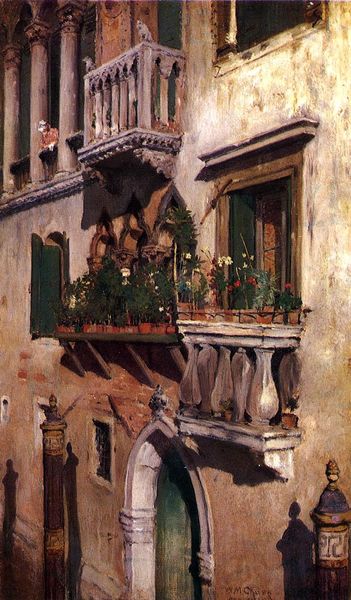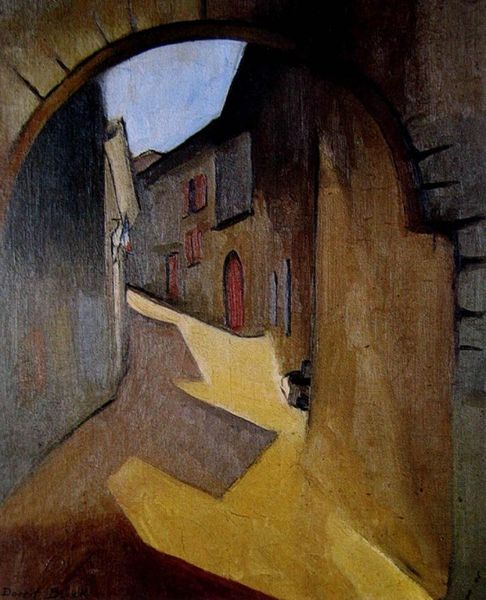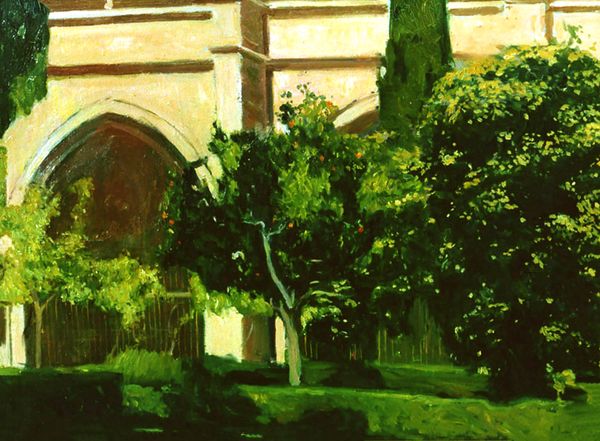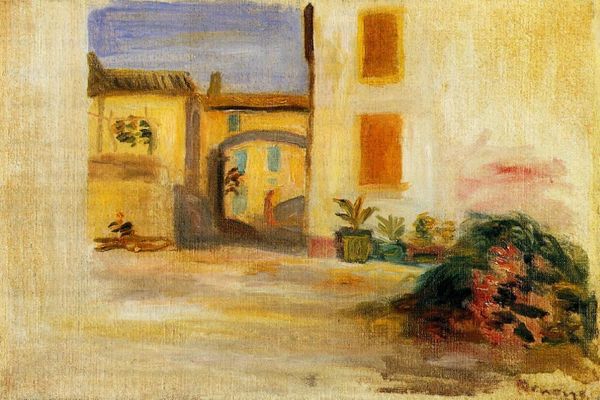
Copyright: Public domain
Curator: This image radiates warmth; I'm drawn in by the subtle, flickering light and the palpable stillness. Editor: You’re reacting to Umberto Boccioni’s “Cloister of S. Onofrio,” created around 1904. Note how Boccioni, later a key Futurist, is experimenting here with Impressionistic techniques, capturing light en plein air with those impasto strokes. The choice of a cloister, typically a place of quiet contemplation, is intriguing given his later embrace of dynamism. Curator: The arches themselves are resonant, aren't they? In religious iconography, the arch symbolizes a transition, a pathway to a sacred space. But here, Boccioni frames not holiness, but an everyday scene – a worker perhaps resting in the shadows. What kind of quiet tension do you find in that framing, using the sacred architecture? Editor: It’s a quiet revolution, wouldn’t you say? He's democratizing the architectural space, pulling it away from solely religious significance. Boccioni painted this scene early in his career, influenced by the Scapigliatura movement's break from tradition. The brushwork seems to celebrate the visible world itself. The impasto seems to drag us back into materiality when it could elevate to the immaterial world of religion. Curator: The colors certainly add to that. While the structure of the cloister lends a sense of stability, the colors - those flickering oranges, greens, reds, the dots and dashes – seem to deny any absolute truth. Instead, we see an explosion of sensations. Editor: It is almost as if we see a critique of traditional perspective too, which historically serves authority, giving the viewer a stable viewpoint. This early work anticipates how Boccioni, within a few years, would explode form and perspective with the Futurist manifestos in favor of multiple perspectives, speed, and motion. I wonder if we see Boccioni on the cusp here. Curator: Indeed. And those figures in the cloister, are they resting, thinking, laboring, or meditating? This picture encapsulates something profound: the artist's role as someone on the threshold of immense change in society and his own style. A real turning point, both restful and full of forward direction, right? Editor: Precisely. “Cloister of S. Onofrio” allows us to peek at Boccioni standing still before his own whirlwind began, contemplating the traditional even as he began the process of subverting it.
Comments
No comments
Be the first to comment and join the conversation on the ultimate creative platform.


